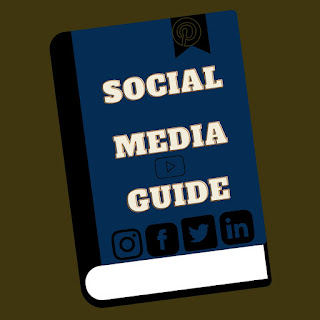A social media style guide is connected to your brand voice. You want your brand essence to be showcased on social media and other marketing platforms for better brand recognition.
 |
| Social Media Guide |
A social media style guide can offer your team concise information about publishing posts, so there’s less room for error. It will also make it easier for you to train new employees. That, in turn, will save both parties time. The less time you waste, the faster you’ll reach your social media goals.
In creating your guide, you need to understand what to include in it in the first place. Here’s a list of important elements:
1. Consumer persona: Creating the consumer persona of your target audience is an important exercise for any business. The consumer persona is an exclusive collection of data about your target audience.
Including a detailed consumer persona in your social media style guide will allow your team to understand the audience they’re targeting. That will help them customize social media content accordingly.
2. Language and formatting style: You must ensure that style is consistent across all your channels. Decide whether to use the U.S. or British English.
Consider how you will optimize your headlines and descriptions for each platform. Different platforms on social media have different word limits. Twitter, for instance, has a 280-word character limit. Decide how long your titles should be and consider tools like Bit.ly that can shorten links.
Finally, consider things like the use of emojis in your style guide. Decide if they are appropriate and which emojis you can use.
READ ALSO: Are Marketers Panicking As Nigerians Abandon The Internet?
3. Industry terms: Use language that’s specific to your industry. Identifying the correct terminologies in your social media style guide will help your team ensure the correct words are used for your social media channels.
Moreover, there may be several words or phrases that your brand exclusively uses. You must define them in your guide as well—but take care to avoid unnecessary jargon.
4. Brand voice: Your social media style guide can ensure you have the same brand voice, even if your tone changes. That’s important because a consistent brand voice helps humanize your brand to customers. If your brand voice is inconsistent, you’ll only confuse them.
You don’t have to reinvent your social media brand voice. Your brand’s website should already embody this tone in the first place. If you construct a brand voice that’s different from your website brand voice in the social media style guide, you’ll end up with confused target customers. Consistency is crucial.
5. Hashtag usage: Hashtags can help your target customers find you—but they aren’t appropriate on every social media channel. Your social media style guide must therefore include an efficient hashtag strategy.
For instance, you can specify the hashtags your customers tag you in when posting about your products. In your guide, you can also explain how your team is expected to respond to them. Do you retweet or comment, or both?
If you have an ongoing campaign or have a future one lined up for your brand, make a list of all those hashtags you’ll use in your social media style guide so your team can integrate them into your social media platforms.
Comments